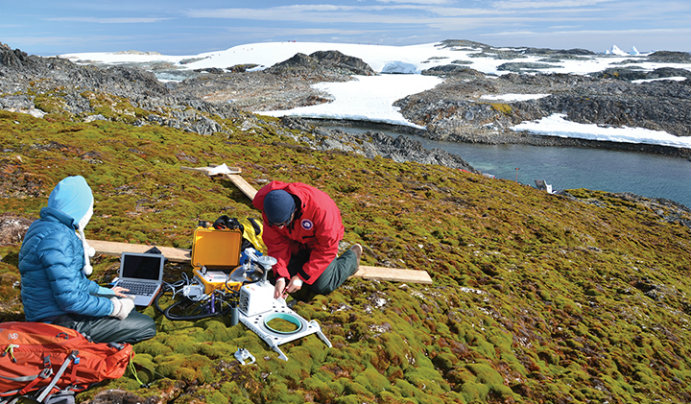An international group of scientists dug deep into the past to understand how peatlands, a type of wetland formed by incompletely decomposed organic matter and water, might respond to climate changes in the future.
Peatlands, found in northern and tropical climates, are considered a “carbon sink” because they absorb carbon from the atmosphere causing less carbon to be released. Carbon dioxide, created by burning fossil fuels, is understood to be a cause of Earth’s warming climate.
Peatlands, according to Zicheng Yu, a professor in Lehigh University’s Department of Earth and Environmental Sciences, only comprise about 3% of the Earth’s land area, but contain about one-third of the global soil carbon and thus have an outsized impact on the global carbon cycle―and an important role to play in global climate change.
It has been known that during the Holocene (11,700 years ago to the present) northern peatlands accumulated significant carbon stocks over several thousand years. However, almost nothing has been known about peatlands that existed before that time.
Now, an international team of scientists, led by Claire C. Treat of the University of Eastern Finland and Thomas Kleinen of the Max Planck Institute for Meteorology in Germany, has become the first to conduct a study of global peatland extent and carbon stocks through the last interglacial-glacial cycle―130,000 years ago to the present—filling this key knowledge gap. Using a newly compiled database of 1,063 stratigraphic records of peat deposits buried by mineral sediments, as well as a global peatland model, the team discovered that northern peatland expanded across high latitudes during warm periods and were buried during periods of cooling, or glacial advance.
According to the article describing the research, “Widespread global peatland establishment and persistence over the last 130,000 y,” published online today in the Proceedings of the National Academy of Sciences (PNAS): “These results show that northern peatlands accumulate significant C stocks during warmer times, indicating their potential for C sequestration during the warming Anthropocene.”
“These new results show the importance of peatlands to the global carbon cycle during and before the Holocene,” said Yu, who is a co-author on the study along with two of his current
Ph.D. students, Jon Stelling and Zhengyu Xia, a former Ph.D. student and postdoc, Julie Loisel, and a former postdoc, Miriam Jones. Yu was a founding chair of the international working group called Past Global Changes Carbon in Peat on Earth through Time (PAGES C-PEAT), under which the project and manuscript were developed.
“It has been assumed that the loss of peatlands meant increased decomposition and release of peatland carbon to the atmosphere, but these data demonstrate otherwise,” said Yu. “Our study revealed that, with burial by mineral sediments, carbon in peatlands can be incorporated into long-term carbon storage in sediment.”
In the conclusion of the article, the authors write: “These observations of buried peats demonstrate that peatlands have been an important C stock since the last interglacial...In particular, actively forming northern peatlands both accumulated C and emitted CH4 during warm periods. During colder periods of glacial advance, the burial of significant northern peat C stocks by mineral sediments and formation of permafrost would have all but stopped decomposition and CH4 emissions..., resulting in the long-term burial of peatland C. The widespread distribution of buried peats and the large mag- nitude of the change in peatland C stock throughout the last glacial cycle suggests that peat formation during warmer times and burial during colder periods has a significant impact on the global carbon cycle that has not been previously quantified.”
The work represented by Lehigh team in this study has been supported by grants from the National Science Foundation (NSF).





